|
By Justin Bariso for Bergen Review Media
In a recent interview, Bill Gates shared some predictions about the new normal that can help your company. Microsoft co-founder Bill Gates went live on LinkedIn to answer questions about the novel coronavirus, including what we should expect life to look like over the next few months, and the next several years. Speaking with LinkedIn editor-in-chief Daniel Roth on "This Is Working," Gates said it will be a while before many things get back to normal. And a lot about everyday life has probably been changed forever. Gates said he believes the U.S. could begin opening back up in early June, if things go well. But he describes this "opening up" more as a "semi-normal" than a return to what many are used to. "It won't be where you're doing large public gatherings or even filling up a restaurant," says Gates. "I do think that things like running factories, doing construction, going back to school--those things can be done." But when it comes to other industries, including hospitality, sports events, and even real estate, Gates believes it will take much longer to recover. "Will people want to go and travel?" Gates questioned. "Will they want to go to restaurants? Will they even think, you know, buying a new home is an appropriate thing? So, even once the government is saying these activities are OK, we can't expect the demand side to re-emerge overnight." Gates believes it will require approval and widespread manufacturing of an effective vaccine before any of these changes begin to take place--and he predicts we're still 18 months away from producing that vaccine. These things will change. Beyond the aforementioned issues, Gates believes the COVID-19 pandemic will keep forcing us to push things digitally. "There are a few things, like business trips, that I doubt will ever go back," Gates said. "I mean, there will still be business trips, but you know, less." And other things, says Gates, will likely be changed for good. For example, Gates cites Microsoft as having gone to virtual shareholder meetings even before the outbreak of the pandemic. As many other companies begin to follow this model, says Gates, he doubts they will want to go back to in-person shareholder meetings. Gates also says as new software innovations emerge, things will continue to change. "What is a virtual courtroom?" he asked. "What is a virtual legislature? How do you create the logic?... In some ways, you can create something that's actually more efficient and better than what was there before." How to adapt? So, if you're a business owner, how can you adapt to the new normal Gates has described? As an example, let's say you run a restaurant. Until social distancing restrictions ease up, you need to make sure you have a robust pickup and delivery service. Stop asking yourself if you want to go that route. It's no longer an option. For now, it's pickup and delivery, or close down. But unlike Field of Dreams, just building out your service doesn't mean people will automatically come. Make sure to adjust your website to prominently feature your new pickup and delivery options. And don't forget the power of content marketing: Work on creating some YouTube videos that demonstrate you cooking some of your most popular dishes. Showcase your personality. Don't worry about people wanting to stay home and cook instead of ordering out: Some will, some won't. Your market is the ones who won't. A few great videos shared on social media may be all it takes to get you back in business. As another example, let's say you're focused on conferences and events. Have all your speaking gigs have canceled? Is your company responsible for putting on events? Yes, everyone is going virtual. But not everyone has the ability to put on a high-quality show. Although the logistics of virtual conferences are much different than live ones, there's still a lot of work to be done behind the scenes. Get familiar with technology, features, and effects that will separate your conference from the rest of the pack. Then, do a few for free, so you can hone your skills and create a portfolio. Once polished, use that portfolio to start selling your speaking or conference services to a huge market that is suddenly looking for online training and events. And let's look to tourism-- the tourism industry is definitely one of the hardest hit by the pandemic. But maybe you can learn from "Greece From Home," a brilliant initiative by the Greek National Tourism Organization, in cooperation with Google. This site is also built on the principle of content marketing: using great online content to create a relationship with potential customers. Through YouTube videos and other content, creators give viewers a chance to tour archeological sites and museums, experience beautiful scenes of nature, and even take "walking" tours or visit restaurants--all virtually, of course. Done right, your content might be able to bring in revenue through ads or product sales. And at the very least, it's a way to keep in touch with your audience until they are willing (and able) to travel again. Even if your business isn't in one of these industries, hopefully this sparks some ideas. The key is to redirect your efforts and use your time wisely. Because very likely this new normal is here to stay. And the quicker you adjust to that fact, the greater your business's chance to survive, and possibly thrive.  What do you want to accomplish next with your money? Do you need to save more? Invest? You’ve done it. You’ve built up a little cushion in your bank account — $1,000! It feels good, right? Those days of checking your account balance in a panic are behind you. Congrats! You’re on the right path. Now it’s time to think about some longer-term goals. What do you want to accomplish next with your money? Do you need to save more? Do you want to buy a home someday? Invest? What’s the next step you should take? What are some specific things you can do to take your finances to the next level? We’ve got some ideas for you: 1. Invest in Real Estate (Even if You’re Not A Millionaire) The stock market can be a scary place. Stock prices shoot up and down like a roller coaster ride, and who knows when the whole thing might crash? It would be nice to diversify and invest some of your money in real estate, but don’t you have to be wealthy to do that? Now you can invest like the 1% does, and all you need to get started is $500. A company called DiversyFund will invest your money in commercial real estate — specifically, in apartment complexes that it owns — and you only need $500. Real estate can potentially earn you more money than the stock market. Over the long term, investing in the stock market will earn you an average annual return of 7%, adjusted for inflation, according to a number of studies. DiversyFund can’t guarantee how its investments will perform in the future — no one can — but historically, it has earned an annual return of 17% to 18%. So you don’t need a fortune to invest in real estate. All you need to get started is $500. 2. Secure Up to $1 Million in Life Insurance; Rates Start at Just $5/Month Have you thought about how your family would manage without your income after you’re gone? Chances are your checking account balance won’t last forever. Now’s a good time to start planning for the future by looking into a term life insurance policy. You’re probably thinking: I don’t have the time or money for that. But your application can take minutes — and, if you’re approved, you could leave your family $1 million by spending a low monthly fee on term life insurance with a company called Bestow. The peace of mind of knowing your family is taken care of is priceless. If you’re under the age of 54 and want to get a fast life insurance quote without a medical exam or even getting up from the couch, get a free quote from Bestow. 3. Ask This Website to Help You Pay Your Credit Card Bill This Month You’ve finally got some money in the bank, but do you still have some lingering debt? We found a company that will pay your credit card bill this month. No, like… the whole bill. Your credit card is getting rich by ripping you off with insane rates, but a website called Fiona wants to help. If you owe your credit card companies $100,000 or less, Fiona will match you with a low-interest loan you can use to pay off every single one of your balances. The benefit? You’ll be left with one bill to pay each month. And because personal loans have lower interest rates, you’ll get out of debt that much faster. Plus: No credit card payment this month. Fiona won’t make you stand in line or call your bank, either. And if you’re worried you won’t qualify, it’s free to check online. It takes just two minutes, and it could help you pay off your debt years faster. 4. Grow Your Money 11x Faster — Without Risking Any of it You’ve probably heard the best way to grow your money is to stick it in the stock market and leave it there for, well, ever. But maybe you’re just looking for a place to safely stash it away — but still earn money. Under your mattress or in a safe will get you nothing. And a typical savings account won’t do you much better. (Ahem, .09% is nothing these days.) But a debit card called Aspiration lets you earn up to 5% cash back and up to 11 times the average interest on the money in your account. Plus, you’ll never pay a monthly account-maintenance fee. Aspiration also shares part of its earnings with environmental charities, among other worthy causes. So you can stick up for the planet — without even having to write a check. It takes just five minutes to sign up for an Aspiration Spend and Save account. 5. Withdraw $5 and Buy a Piece of a Corporation Take a look at the Forbes Richest People list, and you’ll notice almost all the billionaires have one thing in common — they own another company. But if you work for a living and don’t happen to have millions of dollars lying around, that can sound totally out of reach. That’s why we like the app Stash. It lets you be a part of something that’s normally exclusive to the richest of the rich — buying pieces of other companies. But Stash lets you start with as little as a $5 investment. You can buy pieces of well-known companies, like McDonald’s, Apple, Tesla* and more. The best part? When these companies profit, so can you. Some companies even send you a check every quarter for your share of the profits, called dividends. It takes two minutes to sign up, plus Stash will give you a $5 sign-up bonus. (You just doubled your money!) You might not be in the next issue of Forbes, but this is a great way to get started. This article originally appeared on The Penny Hoarder 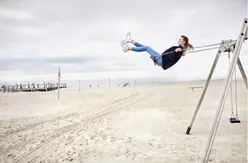 Jeroen raaijenbrink Contributor The coronavirus pandemic has a lot of dark sides. Around the world, people get ill and die, schools close, the healthcare system is overloaded, employees lose their jobs, companies face bankruptcy, stock markets collapse and countries have to spend billions on bailouts and medical aid. For everyone, whether directly hurt or not, Covid-19 is a huge stressor shaking up our psyche, triggering our fears and uncertainties. No matter how serious and sad all of this is, there are upsides as well. Therefore, along the Monty Python song “Always look on the bright side of life” let’s not forget those and make the best of what the crisis gives us. As the good old SWOT analysis tells us, there are not only threats, but also opportunities. With opportunities I don’t mean that the crisis provides extra business for companies like Zoom and Go to Webinar that enable virtual meetings, or for Amazon, which is planning to hire another 100,000 employees. The latter is probably more a threat than an opportunity for most, especially for the mom & pop stores that go through difficult times already. With opportunities I mean general opportunities that are available for most people affected by the crisis. The current crisis offers at least seven of them: Opportunity 1: More time In today’s overheated economy time is often seen as the most valuable and sparse thing we have. Covid-19 shows why: because we have stacked our week with social gatherings and entertainment such as going to the theater, birthdays, cinema, restaurant, bar, sportclub, gym, music, festivals, concerts and what is more. Suddenly, all of that is cancelled or forbidden, giving us significant amounts of extra time. And still, live goes on. This shows us how easy it is to clear our calendars. Obviously this doesn’t apply to the health-care sector and other crucial sectors, but beyond those it applies to a large majority of sectors. The opportunity is that we can spend this time on other things—or even better, on nothing and enjoy the free time. Looking at the crowded parks, waste collection points, garden centers and DIY stores in the last week, many people seem to have a hard time with the latter. Instead of enjoying the extra free time, they fill it immediately with other activities. To seize this first opportunity though, re-arranging how you spend your time and reserving time for nothingness is key. Not just during the crisis, but also after it. The advice in my previous article on the Covid-19 crisis could help in realizing this. Opportunity 2: Reflect and reconsider The fact that the coronavirus disrupts our day-t0-day lives provides an opportunity to reflect on things and to reconsider what we do, how we do it and why we do it. Things we took for granted—like going to the gym—are suddenly not possible anymore. Furthermore, many people have had to change their mode of working and work from home instead of at the office. This means that a lot of our routines are interrupted. This offers a great opportunity to rethink our habits and routines and make changes. Now that you haven’t been able to go to the restaurant twice a week, commute 2 hours per day, hang out with your friends or go to a party every weekend, you can reflect on whether you really want to continue doing so after the crisis. The virus forces you to make changes to your daily life that you might actually want to keep also after the crisis. Opportunity 3: Speed and innovation Many organizations suffer from slow procedures, complex bureaucracies and rigid hierarchies making organizational life less than pleasant. The coronavirus has forced many of them to break through these rigid systems and act instantly. Suddenly procedures can be skipped or accelerated, rules can be side-tracked and decisions can be made more autonomously without formal approval. And suddenly employees are allowed to work from home without direct supervision. Covid-19 shows that, as soon as there is a strong enough stimulus, things can change. This leads to remarkable innovations. Not being allowed to open their doors, restaurants, for example, are shifting to delivery mode. And schools suddenly do much of the teaching and even some of the testing online. This brings the opportunity to create innovations now that can be maintained after the crisis. And it also can help to keep the current speed and innovation mode afterwards. Opportunity 4: Better meetings As referred to in an earlier article, people spend up to 23 hours per week in meetings, half of which are considered a failure or waste of time. The current crisis has forced us to rethink how we deal with meetings. Because in many countries it is not allowed anymore to meet with a group of persons, many meetings are cancelled. And when they still take place they are mostly virtual and shorter. As such, it provides an excellent opportunity for resolving one of the most disliked parts of organizational life. The technology for this is already present and mature for a couple of years, but the coronavirus triggers a sudden need for it. The real opportunity here is to make systematic changes so that meetings will be more effective, also after the crisis. Opportunity 5: Reconnect and help Challenging times offer a great opportunity for social bonding and other ways of connecting to and helping people. Of course, not being able to visit friends or family has increased isolation and feelings of loneliness in some cases. But the feeling of “we’re in this together” has also triggered interesting ways of connecting. Some of those have gone viral—such as Italians singing together from their windows and balconies—but there are many small, local initiatives too to connect and help people who need it. In the individualized societies many of us live in, this provides opportunities to reconnect and create more social coherence. Not only during the crisis, but also afterwards. This opportunity comes with a big caveat though. Parallel to these nice initiatives we also witness how far people go to protect themselves and their families. People hoard food, medicine, toilet paper and guns without thinking a second of others. However, while it triggers self-serving egocentric behavior too, the Covid-19 crisis does provide us the opportunity to reconnect and show our social side. Opportunity 6: Cleaner environment The virus caused a shutdown or dramatical decrease of industrial activities. Factories are closed or operate far below their capacity, road traffic has reduced radically and air traffic collapsed, and the lack of tourism has emptied the streets in overcrowded cities like Venice, Amsterdam and New York. While this may be bad news for most people and especially those working in the affected industries, this is also good news for our planet. Covid-19 causes a significant reduction in green house gasses and other air, water and land polluting outputs. In Venice this has allegedly led to dolphins return after just a couple of weeks (although some argued this to be a hoax). Whether the particular example is a hoax or not is not so relevant. The fact is that the shutdown and lockdown of large parts of our economy is good for nature—at least on the short term. The opportunity this provides, is to keep parts of this in place also after the crisis to make long-term improvements. Along the line of the previous opportunities, the current crisis provides us an opportunity to reconsider our lives and reorganize it in a way that has less impact on our planet. Opportunity 7: Modesty and acceptance The final opportunity that the Covid-19 crisis offers, is a chance to create awareness for the moderate role we play on this planet and accept that things cannot always go as we want them to go. The Covid-19 pandemic is a global crisis chat is unprecedented in modern peace time. We had other pandemics like SARS, but their impact was less substantial. And we had the 1973 oil crisis, but that was a man-made crisis. The coronavirus is not man-made and yet disrupts lives across the planet. As such, the virus shows us that, no matter how well-planned and organized we are and no matter how much we live in the Anthropocene—the era characterized by significant human impact—we are not in control. One simple virus is disrupting everything. This offers a great opportunity. In almost every aspect of life we want to be in control. Whether it is health, airline safety or our calendars, we live in the illusion that full control is possible. The virus can help us create awareness that this is not the case. It provides an opportunity to take a more modest role and accept that many things are simply beyond our control. Once again, the Covid-19 crisis has a large dark side. But as these seven opportunities show, it has positive sides as well. Since all seven opportunities require a quite fundamental change in how we approach the world, seizing them can take substantial time. In that sense, and if we keep on looking at the brighter sides of life, the longer the crisis lasts, the larger the opportunities are and the bigger the chances are of actually making changes to our deeply rooted habits and convictions. Think you have what it takes to gear up and pass through a military-style bootcamp? You might not be going to basic training, but this simple bodyweight routine will help you to build up strength in your shoulders and chest while maxing out your upper body mobility. Take on the two circuits, then test yourself with the benchmark workout. If you can't pass the test, drop and give us 20. (Just kidding. Work your way up to a lower and lower score each week!) Mobility Do 2 rounds of this circuit to bulletproof your shoulders. The first move trains shoulder stabilizers; the second warms up your rotator cuffs. Rest 15 seconds after each set. Strength Do 3 rounds of this circuit. Focus on contracting your back muscles each rep; both moves challenge middle-back, shoulder, and core muscles. Rest 15 seconds after each exercise. The Benchmark Workout Do 10 rounds of this circuit. Start with 10 reps of each move; ladder down by 1 each round (so 9 reps of each move in Round 2, and so on). Then check the scorecard below. Benchmark How quickly can you crush this circuit?
 He followed one of the simplest diet plans possible. Like many guys, Ryan Bamford let himself go a bit after he and his wife had their first kid. "Over the span of a year or two, I creeped up to a max of 213 pounds," he says. That didn't make him terribly obese, but on his 5'7" frame, he was still noticeably out of shape. Bamford points to his erratic diet—which often consisted of overindulging himself on buffet lunches and snacks—as the biggest contributor. "I was eating around 3,500 calories a day for a while," he says. "I also wasn't doing much physical activity at home, which didn't help," he admits Bamford, 26, who works in IT for the NHL's Tampa Bay Lightning, says his turning point came when he had to replace his entire wardrobe—for the third time. "I was edging on size 40 pants," he says, adding that he now wears a size 28 or 30, for the sake of comparison.  Before Before To get things back on track, Bamford started to restrict how often he ate. For the first three or four months, that meant following a strict "OMAD"—one meal a day of roughly 1,200 calories—schedule of intermittent fasting. "I slowed that down and became less strict the closer I got to my goal," he says. He also gave up fast food and soda, though he says he does enjoy the occasional zero carb, zero calorie energy drink. Unlike most people who lose weight fast, however, Bamford didn't dramatically alter his fitness routine—to this day, he still doesn't spend much time in the gym. Instead, his primary workout comes from skateboarding, which he does for at least an hour and a half a day. "It's a really intense workout, both cardio and muscle building, depending on how you do it," he says. "I focus on a lot of flip tricks which involve tons of muscle movement, squatting, jumping, kicking, pushing, and so on. It really works out your core." In the span of a three-hour session at the skatepark, he says, he's burned more than 2,000 calories, according to his fitness tracker. Over the span of about four months, Bamford lost close to 50 pounds. He's now nine months in and down to 147 pounds from his peak of 213—a 66-pound weight loss transformation. "I feel fantastic, I'm in the best physical shape of my life and I feel good about myself," he says. "I can also skate so much better with less weight holding me down." Bamford's next goal is to start weight training—he has his eye on developing a six-pack for once. But for now, he's taking it slow for a change. "Going into a caloric deficit and losing weight requires some fundamental lifestyle changes, but once you've reached your goals, you can afford to let up on the gas a little," he says. That said, there's also nothing wrong with going at your own pace, he says. "Start slow if you need to, cut out some calories here and there, and work your way up to cutting out more," he says. "Find something that motivates you and focus on how good you'll feel once you've reached your goals. It's all worth it in the end." 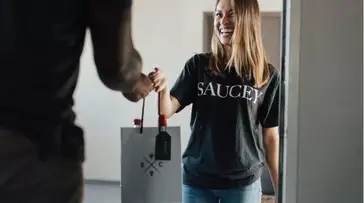
Many states are relaxing alcohol delivery laws as liquor stores are deemed an essential service during the pandemic. Here's how to find a service you can use in your area. Many states are relaxing alcohol delivery laws as liquor stores are deemed an essential service during the pandemic. Here's how to find a service you can use in your area. Running low on beer, wine and spirits? That's little surprise considering our current state of affairs. Maybe you've had lots of virtual happy hours over Zoom. Or perhaps you're planning to unwind from the stress of the coronavirus outbreak with a Netflix Party and an adult beverage, but you can't summon the energy to head to the store while wearing homemade face mask. Alcohol delivery is looking pretty good.You're not alone in this decision. According to research from Nielsen, online alcohol sales specifically were up 243% last week alone in the US. As lockdowns, quarantines and shelter-in-place orders keep more people indoors, limit shopping excursions and all but shutter local bars and restaurants, many are turning to other means for keeping their favorite booze in stock.A number of national delivery services, wine club services and larger regional stores are still delivering alcohol during the pandemic. Some restaurants offering takeout and delivery also offer alcoholic drinks -- though some states require you to buy food, too. (It's considered safe to order food or alcohol from restaurants and stores, according to the Centers for Disease Control and Prevention, though you can follow certain precautions to keep yourself and your delivery driver healthy.) Alcohol delivery laws vary by state, so not every service is available in every area. Many states, however, have deemed liquor stores an essential service during the pandemic, and are now allowing delivery of such beverages from restaurants and liquor stores where they may not have in the past. There are a ton of online liquor delivery services, as well as wine- and beer-of-the-month clubs. Many regional liquor stores also have delivery options. If you're looking to stock up on some booze without going out to the liquor store, here are a few services to check out. Just remember that the same rules that have always applied to alcohol apply now, more than ever: Only enjoy booze in moderation, and never drink and drive.
 COVID-19 has only been around for a few months, so at this point, scientists don’t know that much about it. But more is being learned every day. We now know, for example, it can live on surfaces for up to nine days and survives in the air for a few hours. We now know, for example, it can live on surfaces for up to nine days and survives in the air for a few hours. We also now know that the virus particles are shed through saliva and fluids coughed up from the lungs. And that the virus can also be shed from our feces. It’s easy for an infected person to spread the virus particles through coughing, touching other people or leaving the virus on surfaces. Undoubtedly, hand-washing after being in public spaces is key to reduce the spread of COVID-19. But what should we be doing in our homes to eliminate it? Two recent studies have investigated how long coronaviruses survive on different surfaces. The research looked at a number of different viruses including SARS-CoV-2 – the coronavirus that has caused COVID-19. And it found that the survival times varied according to the type of surface. The virus survived for longest on stainless steel and plastic – for up to nine days. The shortest survival times of one day was for paper and cardboard. The amount of virus particles during this time does reduce, but it’s worrying that the particles can last for days rather than hours or minutes on a surface. So, how good are the cleaning products already in your cupboards at killing SARS-CoV-2? There is some good news in the list below. 5. SOAP AND WATER Soap and water are your first line of defense to remove the virus from surfaces. Soap interferes with the fats in the virus shell and lifts the virus from surfaces and this is then rinsed off by water. Of course, you also need to wash your hands when you come in from the shops and wash your food as normal. 4. BLEACH The active ingredient in bleach – sodium hypochlorite – is very effective at killing the virus. Make sure you leave the bleach to work for 10-15 minutes then give the surface a wipe with a clean cloth. The bleach works by destroying the protein and what’s known as the ribonucleic acid (RNA) of the virus – this is the substance that gives the blueprint for making more virus particles when you become infected. Be sure to use the bleach as directed on the bottle. 3. SURGICAL SPIRIT Surgical spirit is mostly made up of alcohol ethanol. Ethanol has been shown to kill coronaviruses in as little as 30 seconds. Like bleach, the alcohol destroys the protein and RNA that the virus is made up of. Moisten a cloth with some neat surgical spirit and rub it over a surface. This will evaporate and you will not need to wipe it off. 2. SURFACE WIPES The active ingredient in surface wipes in an antiseptic –- usually benzalkonium chloride. The wipes work by physically removing germs through the pressure you apply when you use them, and the germs then attach to the wipe. They also leave a layer of the antiseptic on the surface that works to kill germs. The antiseptic works well on bacteria as well as on coronaviruses that infect mice and dogs – but it seems to make no difference to the spread of human coronavirus. Antiseptics work by disrupting the fats in pathogen cells, but SARS-CoV-2 does not contain many fats. So far, there is no evidence that antiseptics can kill human coronaviruses. 1. HAND SANITIZERS A word of warning though about hand sanitizers. The main ingredient in hand sanitizers that will kill SARS-CoV-2 is ethanol, the alcohol in the surgical spirit. But its concentration in the sanitizer is very important –- it has to be over 70 % or it will not kill the virus effectively. One thing you can also do is make sure you air out the spaces you are spending time in regularly. An infected person will produce thousands of tiny droplets that contain the virus every time they cough. SARS-CoV-2 can survive in the air for up to three hours. So by opening the window, you can remove and disperse the droplets and reduce the amount of virus in the air – which will reduce the risk of infection for others. We are living in uncertain times but it’s reassuring to know that we have some weapons we can use to fight COVID-19 in our homes. The bottom line: keep washing your hands, use 70% hand sanitizer, dust off the bleach and open a window to let in the spring air. This article was originally published on The Conversation by Lena Ciric at UCL. |
Written, Compiled & Edited byThe Bergen Review Media Team
�
Archives
April 2024
Categories
All
|
|
Bergen Review Media is a
WebClientReach, llc Company |
50 East Ridgewood Ave. #215
Ridgewood, NJ 07050 Phone: (201) 948-5500 |
The Bergen Review is Bergen county's concierge for the best businesses, restaurants & venues in New Jersey. Our agency has a combined total of over 15 years experience in online media and marketing. Our team of experts scour every nook and cranny of New Jerseys best businesses, restaurants & venues to present to our clients the full scoop of where best deals & experiences are. Even after researching & looking at reviews, finding the REAL scoop on what Businesses, restaurants or venues best fit your interest can be a challenge. Bergen Review Media has a team that researches & visits various establishments. Making sure the consumer gets the best experience.
|
Website by Bergen Review Media


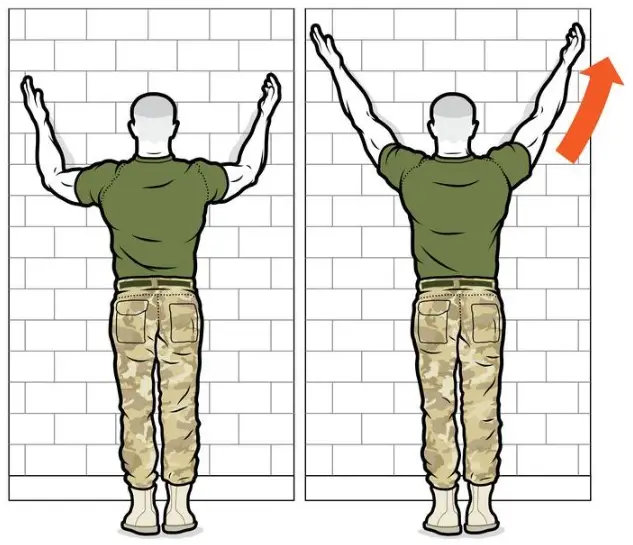




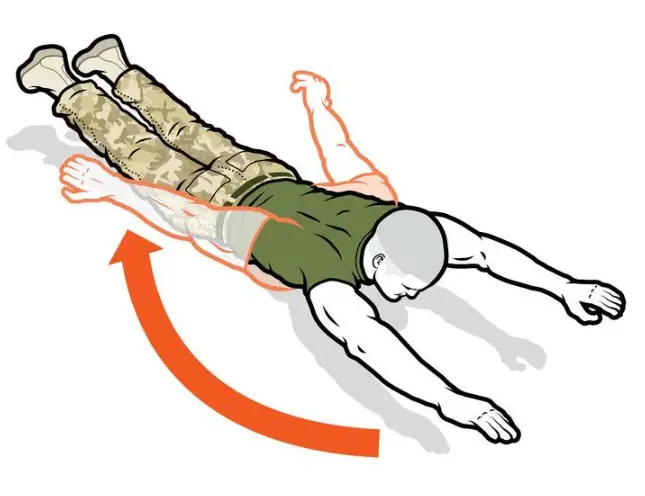



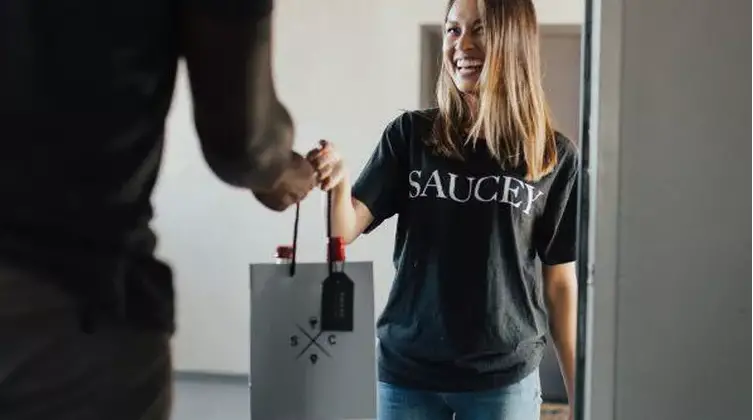
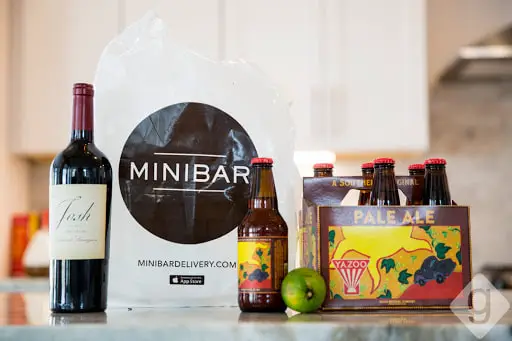

 RSS Feed
RSS Feed






